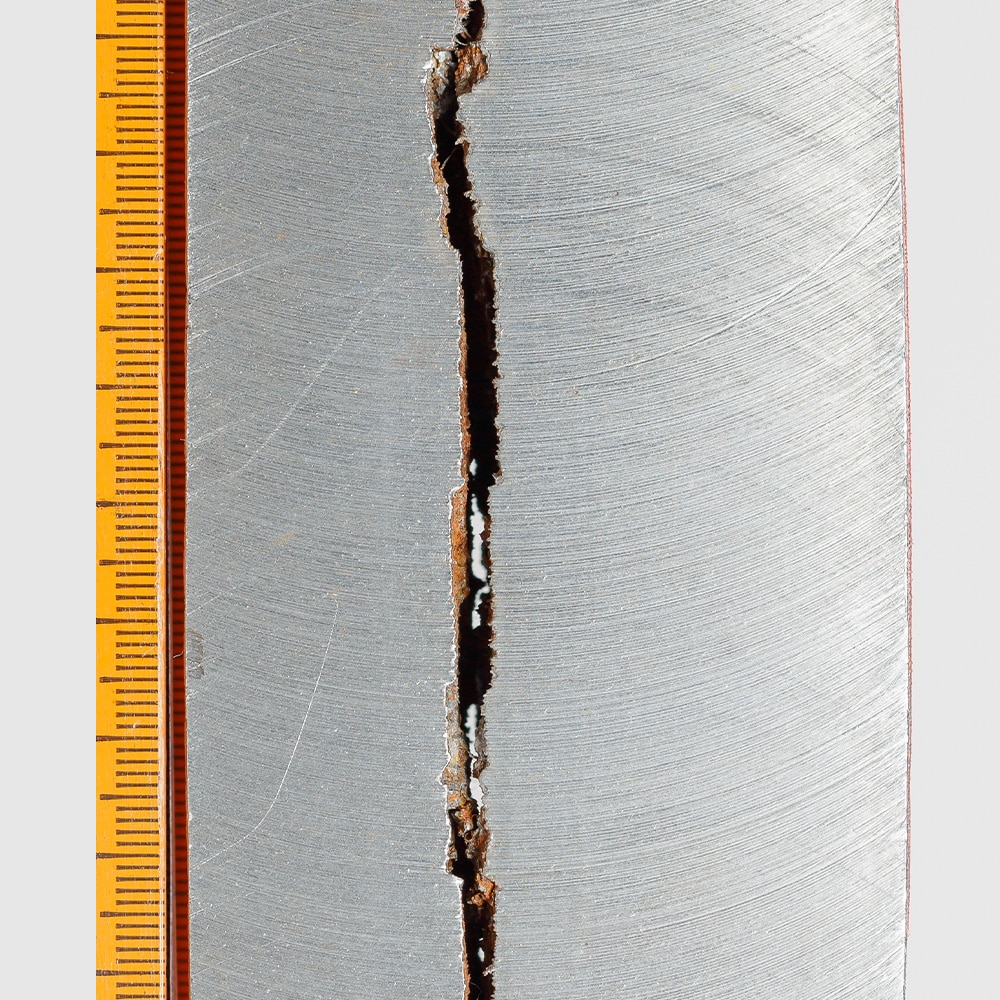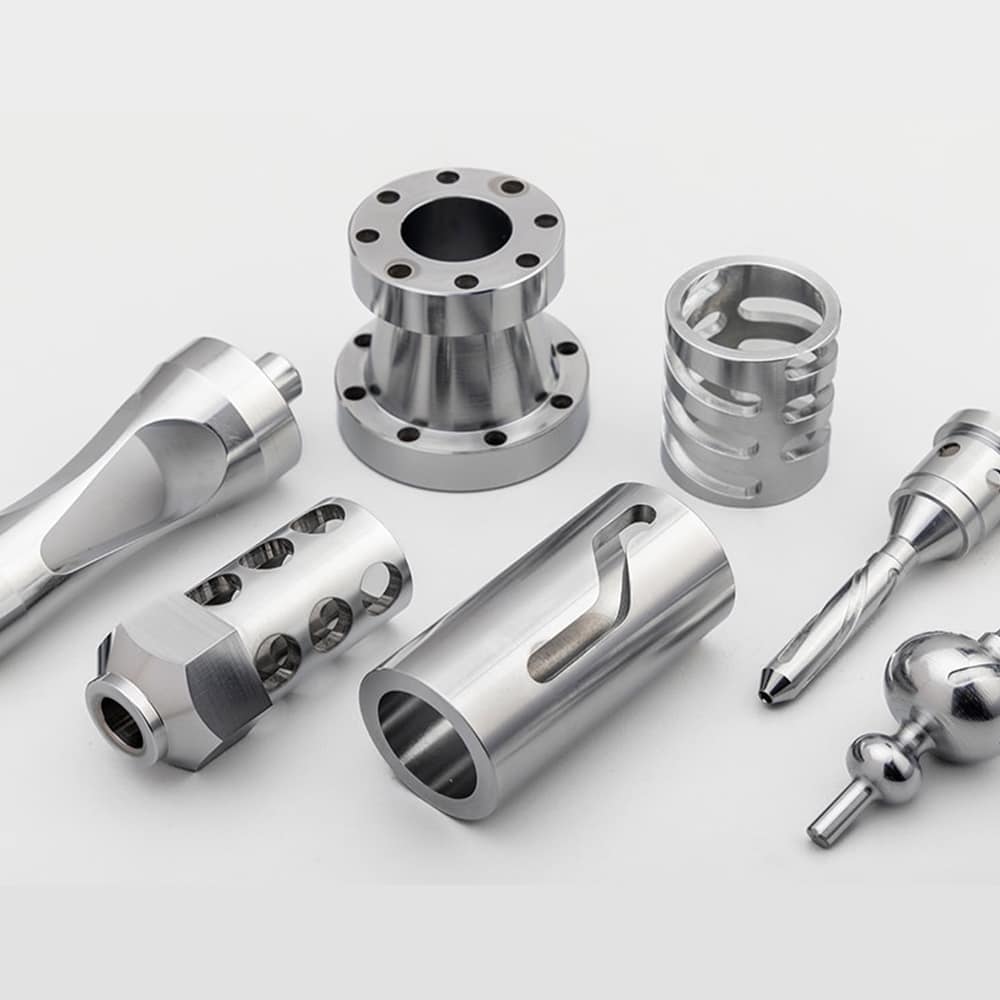Armoloy Specifications
What is ASTM F519?
ASTM F519 is a standard for evaluating hydrogen embrittlement in steel components caused by the plating process. It is commonly used as a supporting standard within plating specifications, such as AMS 2403 or AMS 2406, that call for hydrogen embrittlement testing of high-strength steel components. Hydrogen embrittlement occurs when hydrogen atoms penetrate steel, causing brittleness and reducing the material's strength, often leading to sudden failures.
The standard specifies a mechanical testing framework, including tensile and sustained load tests, to evaluate a material's susceptibility to embrittlement under controlled conditions.
Notched specimens are subjected to a 200-hour sustained load test (SLT) to determine their fracture strength and long-term durability. Results provide crucial insights into the integrity of coated steel, ensuring that plating processes do not compromise performance, safety, or reliability.
ASTM F519 is critical in aerospace, automotive, and oil and gas industries, where high-strength steel is used in demanding environments. By standardizing hydrogen embrittlement testing through notched specimens, the specification supports quality control, safety assurance, and compliance with industry requirements.

The Role of ASTM F519 in Evaluating the Hydrogen Embrittlement in Steel
ASTM F519 provides a standardized framework to assess hydrogen embrittlement in steel, ensuring materials remain strong and reliable. Key roles of ASTM F519 include:
- Standardized Testing: Provides a consistent method to assess steel’s susceptibility to embrittlement across industries.
- Preventing Failures: Identifies risks early to avoid material breakdowns, accidents, and costly downtime.
- Ensuring Reliability: Validates the strength and durability of steel components for use in critical, high-stress applications.
- Driving Innovation: Encourages the development of coatings that minimize embrittlement risks.

ASTM F519 Testing Methodology & Results
The ASTM F519 testing methodology ensures that steel components retain their integrity under stress. The testing process includes:
- Specimen Preparation: Notched tensile bars are coated and prepared for testing.
- Tensile Testing: Measures Notched Fracture Strength (NFS) to verify batch consistency.
- Sustained Load Test (SLT): A fixed tensile load is applied to notched specimens for 200 hours to determine if premature fracture occurs.
- Result Interpretation: Fractures suggest hydrogen embrittlement, and results are confirmed based on fracture timing, location, and appearance.
- Comprehensive Reporting: Records load conditions, failure data, and other required details per Section 12.
This process identifies and mitigates embrittlement risks, supporting safe, reliable deployment of coated steel in critical applications.

Industries that Use ASTM F519
ASTM F519 is vital in industries where hydrogen embrittlement can weaken coated steel components:
- Aerospace: Ensures landing gear and fasteners withstand extreme conditions.
- Automotive: Tests coated engine and drivetrain parts for durability under stress.
- Heavy Machinery: Supports the longevity of chrome-plated construction and mining equipment.
- Medical Devices: Verifies the durability of coated surgical tools and implants.
- Oil and Gas: Validates the integrity of drilling equipment and pipelines exposed to hydrogen-rich environments.
These industries rely on ASTM F519 to maintain safety, performance, and reliability in demanding applications.

Benefits of Working with an ASTM F519 Provider
Precision testing
Providers offer accurate and reliable evaluations tailored to ASTM F519 standards
Enhanced quality control
Standardized testing ensures coating processes meet industry benchmarks for safety and reliability
Early risk detection
Identify and address hydrogen embrittlement risks through routine process validation and ongoing quality control
Regulatory compliance
Providers ensure components meet regulatory and industry-specific requirements
Performance optimization
Test results help improve plating processes to enhance material durability and reliability
Technical expertise
Skilled providers conduct testing accurately and offer insight into minimizing hydrogen embrittlement risks
Consistent standards
Standardized methods ensure reliable testing across batches and applications
Customer confidence
Comprehensive testing fosters trust in the integrity and longevity of coated components

Specifications at Armoloy
Armoloy offers plating solutions that meet ASTM F519 to support both regulatory compliance and individual project needs. Explore common specifications and accreditations we work with, and contact us to find the right solution for your application.
Disclaimer
The information provided on this page, including any descriptions, interpretations, or summaries related to ASTM F519, is offered solely by The Armoloy Corporation for general informational purposes. This content reflects Armoloy’s internal understanding and practical application of ASTM F519 within its own processes and does not constitute official or authorized guidance from ASTM International.
ASTM F519 is a proprietary standard developed and owned by ASTM International. Armoloy makes no claim to ownership of this specification and does not reproduce, quote, or distribute any protected content from the original document. References to ASTM F519 are made in accordance with fair use principles and are intended to illustrate Armoloy’s alignment with widely recognized testing standards.
This content is not intended to substitute for the official specification, which should be obtained directly from ASTM International. Readers are strongly encouraged to consult the original standard and qualified professionals for definitive technical or compliance information.
The Armoloy Corporation makes no warranties, express or implied, regarding the accuracy, completeness, or applicability of this content and disclaims all liability for any reliance placed upon it. This disclaimer is subject to change without notice and does not create any contractual relationship or obligation.
